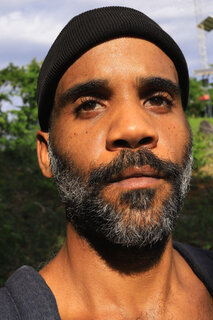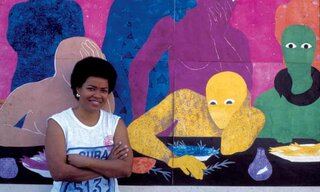
MOLAA Collection. Gift of the artist
Cássia Aresta uses the language of geometry, particularly the harmony or tension between shapes and the way that their boundaries split of overlap, to establish a sense of space and time. Her surfaces balance a variety of art elements, such as line, shape, color, and value in visually poetic ways that provoke reflection and introspection on the part of the viewer. In the case of this collage, which utilizes found materials such as scraps of envelopes and stamps, the material adds an added layer to the narrative, suggesting not just the boundaries between sheets of paper, but between individuals and geographical regions, as well.
Cássia Aresta usa el lenguaje de la geometría, particularmente la armonía o tensión entre las formas y la forma en que sus límites se dividen o se superponen, para establecer una sensación de espacio y tiempo. Sus superficies equilibran una variedad de elementos artísticos, como la línea, la forma, el color y el valor de formas visualmente poéticas que provocan reflexión e introspección por parte del espectador. En el caso de este collage, que utiliza materiales encontrados como trozos de sobres y sellos, el material agrega una capa adicional a la narrativa, sugiriendo no solo los límites entre hojas de papel, sino también entre individuos y regiones geográficas.




